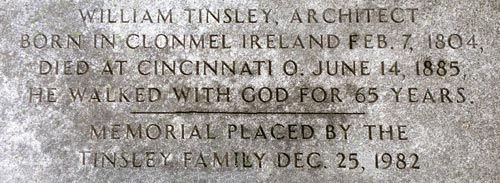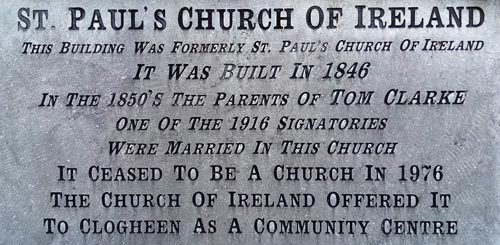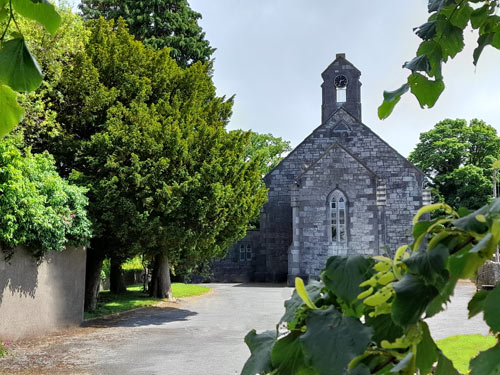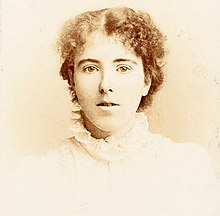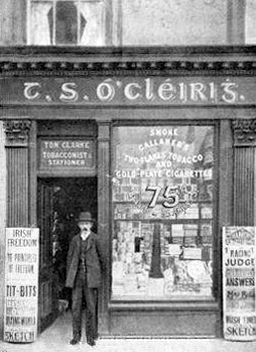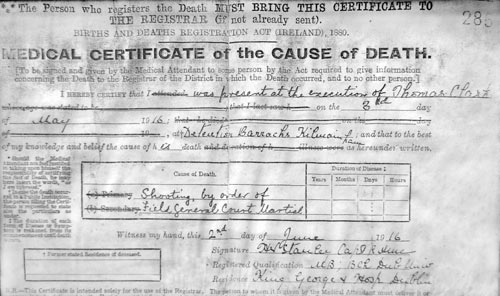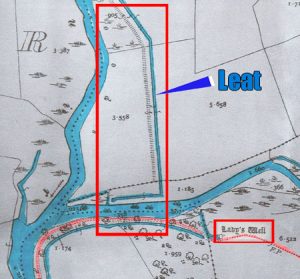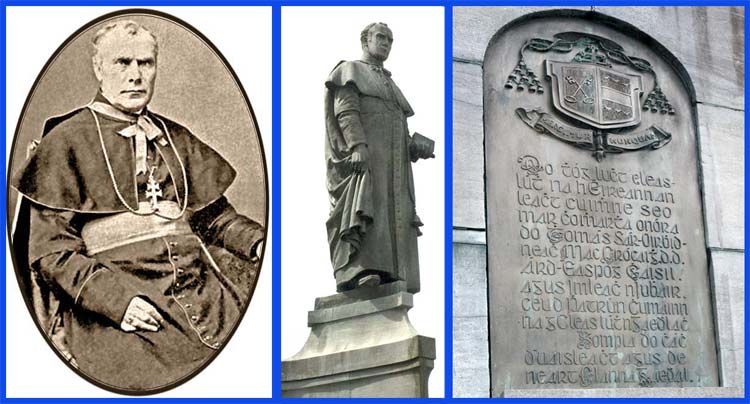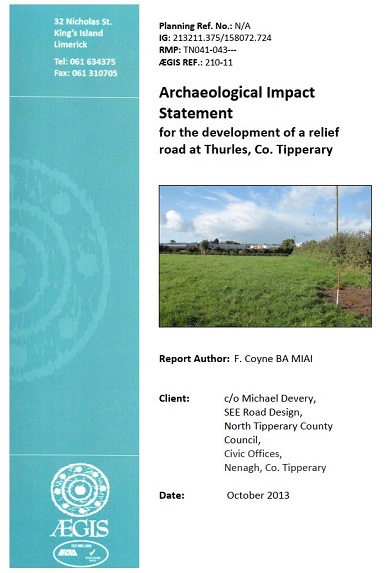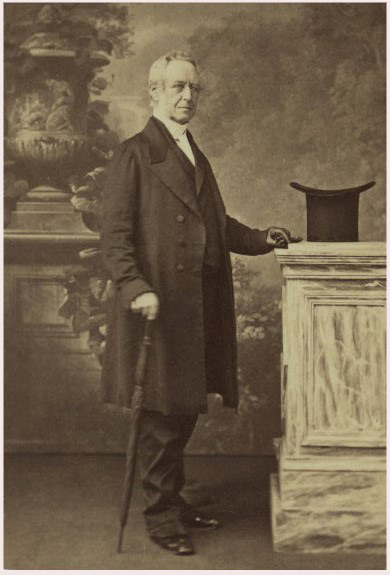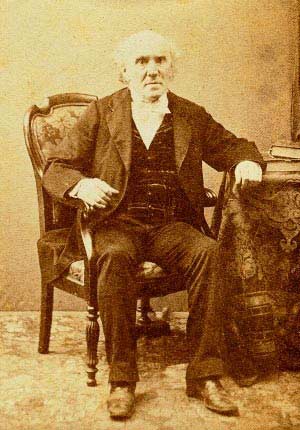“Sun and moon, sun and moon, time goes”.
[Quote by American novelist, poet, art and literary critic, John Updike].
“If you can dream it, you can do it.”
[Quote by American animator, film producer, and entrepreneur, Walt Disney].
The predominantly rural county of Tipperary is rightly referred to most often as the ‘Premier County’.
Latter description is attributed to Mallow, Co. Cork born, Thomas Davis (1814-1845), former joint Editor of ‘The Nation Newspaper’. Same newspaper became the weekly organ of what would become known as the ‘Young Ireland Movement’.
It was Davis who penned the phrase ‘Where Tipperary leads, Ireland follows’; a tribute to the then true nationalistic feelings existing in Co. Tipperary and especially in Thurles. View HERE.
The story which we publish today, first began while linking a grave stone to a whiskey glass and was first written almost seven years ago. [June of 2017 – View Original Story HERE].
The gravestone inscription reads; “O holy cross under thy shadow I will rest.” In loving memory of John O’Brien, 19 Main St, Thurles [Co. Tipperary]. Died 30th June 1917, aged 62 years. R I P. “An upright man fearing God and avoiding evil”. [Grave Ref: 349 Alphabetical Order].
The inscription on the whiskey glass reads “John O’Brien, Special Malt, 19 Main Street, Thurles”.
- Note: Main Street Thurles today is called Liberty Square, since most streets in Thurles town were renamed, following the Republic of Ireland becoming a self-governing dominion, since December 6th 1922.
As a result of this published story; in August 2021, Thurles.Info was contacted by an English lady reader and excellent researcher, Ms Nora Muldoon, who informed us that a former employer of hers, named as Mr Iain Alasdair Cameron Smith (known by all as Alasdair) had informed her that his grandparents were John and Mary O’Brien [or Marian (nee Ryan) O’Brien], residing at No.19 Main Street, Thurles, Co. Tipperary.
Alasdair’s mother was Josephine Smyth (nee O’Brien) of Thurles, older sister of Nancy (Angela) O’Brien, and his mother’s parents owned an off-licence and grocery shop, at No. 19 Main Street. He spoke also of his famous first cousins, then residing in the United States of America. Josephine O’Brien’s (Mr Smith’s mother) younger sister Nancy (Angela), had emigrated from Thurles to the USA.
In 1920, Nancy (Angela) married Mr William O’Connor, a native of Fethard, Co. Tipperary, whom she had met and had fallen in love with, before leaving Ireland.
[Fethard village is just 30.4 km, via the R689, from Thurles town].
William O’Connor had first emigrated to the USA, before taking a job as a bottle washer at a spring water company, known as “Crystal Spring”, in the populous city of New York. William would later work his way up within the company to become President, earning, back then, in excess of $15,000 per year; equivalent to some $277,022 in purchasing power today, 2024.
- William O’Connor and his wife Nancy (nee O’Brien) took up residence in Larchmont, New York, latter an affluent Westchester County suburb on Long Island Sound. Their union led to the birth of four daughters during the first two years of their marriage. Based on the birth dates of these children, the couple become the proud parents of two sets of identical twins; Mary Claire and Perpetual, followed the next year by Gloria and Consuelo. Throughout their future lives and wherever they went, in particular Consuelo and Gloria would turn heads, because of their beauty and unfaltering elegance, and later would become the first ‘TONI’*Twin models.
- NOTE: ‘TONI’ was a company founded by brothers Neison and Irving Harris, that produced/manufactured a permanent wave kit-hair care product, while operating from a former schoolhouse near Forest Lake, Washington County, Minnesota, latter a mid-western U.S. State, bordering Canada and Lake Superior. Their product would become the first popular ‘permanent hair waving treatment’ that materialised just after WWII and would be advertised world-wide. The Toni company would go on to use Consuelo and Gloria O’Brien-O’Connor, as their first set of identical twins, to advertise their products; one with a salon perm and one with the home perm. Following initial product success, over the next four decades, they would continue to introduce a number of other products and brands onto the market (e.g. ‘Silkwave’, ‘UnCurly’, ‘Tonette’, ‘Silver Curl’, ‘Prom’, ‘Scatter Perm’, ‘Lightwaves’, ‘Epic Waves’, and a formula to remove curls, ‘Curl-Free’).
By 1929, the couple, William and Nancy O’Brien – O’Connor, had separated, but they never divorced, remaining good friends. A hayfever sufferer herself, Nancy and the children moved to a house in Yarmouth, Nova Scotia, some 941.6 km away via route I-95 S, where the 4 children attended at the Sacred Heart School. However, we learn that by 1943, Nancy had moved back to New York, and Gloria and Consuelo; then aged 15, were living at the ‘Hotel des Artistes‘, on No. 1 West 67th Street, New York, latter a $12 a day establishment (about $205 equivalant in 2024).
The hotel, whose regular customers included the English playwright, composer, director, actor, and singer, Sir Noël Coward (1899 – 1973), known for his wit, flamboyance, and what ‘Time’ magazine referred to as a man “with a sense of personal style, a combination of cheek and chic, pose and poise”.
Also a regular guest here, at this time, was American-born dancer and choreographer Isadora Duncan, (Our readers will remember the film ‘Isadora‘, starring Vanessa Redgrave). Isadora died tragically, when her long red silk scarf, became entangled in the rear wheel hubcap of the open sports car in which she was travelling as a learner passenger. [Accidental strangulation through laryngeal rupture and carotid artery narrowing, brought about her instant death, before she was wrenched from her car, onto the cobblestone street, in Nice, France].
- Sadly, also in this building, American heir; World War I veteran; publisher; poet; writer, and co-founder of Black Sun Press, Mr Harry Crosby (1898-1929), took his own life and that of his then mistress Josephine Noyes Rotch; both shot dead by bullets to the head. [Mr Crosby, was the son of one of the richest banking families in New England; a member of Boston’s traditional upper class, and the nephew of Jane Norton Grew, the wife of financier J. P. Morgan].
- Here, the O’Brien – O’Connor twins could have met other regular guests such as Mr Peter Benchley, well known for his bestselling novel and later film ‘Jaws’; or the American novelist, American Jewish civil rights activist Mrs Fannie Hurst, a close friend of Eleanor Roosevelt. They may even have rubbed shoulders with the American actor Richard Earl Thomas, best known for his leading role as budding author ‘John-Boy Walton’, of the CBS drama series ‘The Waltons’, along with the many other artistic greats either residing or passing through this establishment.
- It was at the same ‘Hotel des Artistes’ that the O’Brien-O’Connor twins first ran into Hungarian photographer Andor György Ikafalvi-Dienes, better known as André de Dienes (1913-1985).
In 1938 the then editor of Esquire, Mr Arnold Gingrich, had helped fund this talented photographer to the United States, having offered him work. On arrival, Dienes photographic talent easily found work with magazines ‘Vogue’, ‘Life’ and ‘Esquire’. It was the same Dienes who first discovered the nineteen-year-old Marilyn Monroe, then known as Norma Jeane Baker, (married name Norma Jeane Dougherty), who was modelling at Emmeline Snively’s ‘Blue Book Model Agency’. During his lifetime, he would go on to photograph such notable actors as Elizabeth Taylor, Marlon Brando, Henry Fonda, Shirley Temple, Ingrid Bergman, former US President Ronald Reagan, Jane Russell, Anita Ekberg and Fred Astaire, to name but a few.
Now, aged just 15 years of age, these beautiful twins, Consuelo and Gloria, first met André de Dienes on the lift in Hotel des Artistes, and were invited by him to undertake modelling work. Very soon afterwards, the twins found themselves doing newspaper ads and fashion shows for large department stores. They were featured on the cover of ‘Look’ magazine in 1945, and two years later, were chosen as the original models for the famous ‘Toni Home Permanent’ ad campaign.
While their mother Nancy (Angela) appeared to welcome their fame, William, their father, was initially horrified, but Consuelo and Gloria were making lots of money, whilst simultaneously attending private high schools in Manhattan; first the Lodge School and then the French Institute. They graduated in 1946 and ‘Life’ magazine deemed their debutante party, held at the Waldorf-Astoria, Midtown, Manhattan, New York, as one of the ‘events of the season’.
In 1947, Consuelo and Gloria went on a double ‘blind date‘ with a pair of visiting Italians men. They were, taken to eat at the once famous ‘The Colony’; restaurant (which alas is no more, having closed in 1971).
Gloria was matched with the Florentine nobleman Emilio Pucci, who was a year away from launching his fashion business.
Consuelo’s date was Count Rodolfo (Rudi) Crespi. Just three months later, on January 22nd, 1948, the 19-year-old glamour model married this 23-year-old Italian Count, at St Ignatius Loyola Church, situated at 980 Park Avenue, on the Upper East Side of Manhattan, New York City, with her identical twin sister Gloria acting as her maid of honour.
Count Rudi Crespi was born to parents Count Rodolfo Crespi (1874-1939) and Countess Marina Crespi, in 1924. While still a child, his father was murdered by the family chauffeur, who, at his court trial, claimed to be the lover of Rudi’s mother. In the scandal which followed, his mother fled to Rome with Rudi and his younger brother, Marco Fabio. She would eventually remarry Francesco Malgeri, a prominent Rome journalist.
During the war, Rudi had avoided being drafted into the army of Italian dictator Benito Mussolini, by hiding out in Vatican City, where a job had been conveniently arranged for him at the pontifical post office. He never denied his family’s humble origins, stating publicly that the only reason he was a Count was because his grandfather had the good sense to buy a title.
Twin sister Gloria, following a brief first marriage to Miles Lowell, (later annulled); went on to wed Wall Street insurance broker Frank Schiff, in New York, on December 27th, 1954. Her other sister Perpetual, who was married to Teal Traina, the Seventh Avenue business partner of the high-end designer Norman Norell, was maid of honour. Frank Schiff’s father, Colonel William Schiff, of 740 Park Avenue was his best man. Frank Schiff would eventually handle premiums worth around $250 million a year, for clients including Philip Morris, Piper Aircraft, Gimbels and Lehman Brothers.
Frank and Gloria spent their honeymoon in Jamaica, where they kept company with Columbia Broadcasting System’s founder William S. Paley and his second wife, Barbara.
Gloria Schiff would become a public relations assistant to Helena Rubinstein, the cosmetics entrepreneur, before then taking on the roll as a fashion editor at Harper’s Bazaar, under Diana Vreeland.
Later, when Ms. Vreeland was named editor in chief of ‘Vogue’ in 1962, Gloria Schiff moved, becoming senior fashion editor at Vogue.
It was Gloria who introduced Mrs Jackie Kennedy to designer Valentino. Several months after the assassination of President John F. Kennedy; Gloria Schiff was wearing a two-piece black organza Valentino ensemble, when she ran into the former first lady. Jackie asked her who had made her suit. Gloria set up an appointment with Valentino that same afternoon, and the six outfits Jackie ordered that day, saw her through her year of mourning and made Valentino an international fashion star.
Consuelo’s Granddaughter & Fashion Photographer Chloe.
Meanwhile, after their wedding, Consuelo Pauline O’Brien – O’Connor Crespi and husband Count Rudi Crespi rented an address on the island of Capri, and Count Rudi’s pal Gianni Agnelli, the Fiat heir, visited them on his yacht with his girlfriend Mrs Pamela Churchill, the ex-wife of Sir Winston Churchill’s son, Randolph.
Life for the Crespi’s now began with visits to nightclubs and dancing late into the early hours, according to sister Gloria.
In January 1949, Count Rudi was best man at Tyrone Power’s wedding, to Hollywood starlet Ms Linda Christian in Rome, and six months later he hosted a large reception for David O. Selznick and his bride Ms Jennifer Jones, following the latter’s wedding on the Italian Riviera.
Consuelo Pauline O’Brien-O’Connor Crespi, through her choices in attire and in publishing, now played a major role in influencing the fashion world; thus giving a boost to the careers of designers such as ‘Valentino’, ‘Fabiani’, ‘Fendi’ and ‘Missoni’.
In addition to her role as editor of Italian Vogue, Countess Consuelo Crespi’s appearances at social events e.g. the ‘Black and White Ball’ hosted by American novelist, screenwriter, playwright, and actor, Truman Capote, in 1966, immediately became widely reported.
In a best-dressed list published in 1958 by the New York Dress Institute, Countess Consuelo was ranked third, behind the Duchess of Windsor, but ahead of Queen Elizabeth II in fourth place, while actress Audrey Hepburn took fifth place.
Consuelo Pauline O’Brien O’Connor Crespi and her husband Count Rodolfo (Rudi) Crespi both undertook public relations for major designers, through editorial content in ‘Vogue Brazil’ and ‘Vogue Mexico’.
Countess Consuelo was included on the International Best Dressed List and was recognized by the Fashion Hall of Fame for her, “faultless taste in dress without ostentation or extravagance”. The government of Italy bestowed its highest-ranked civilian award to Countess Crespi, for her assistance in promoting the fashion industry in that country. [Ordine al Merito del Lavoro – Order of Merit for Labour].
Five years later, their world would disappear, as Italy fell victim to the kidnappings, assassinations, and bombings by the far-left Red Brigades, latter a Marxist–Leninist armed organization, which were operating as a guerilla terrorist group, based in Italy. Their actions resulted in many of the upper class moving abroad. The name Crespi was known to feature on their kidnapping list and Consuelo, in an interview with Time magazine, in explaining her move back to New York stated, “In Italy now you want to feel rich and look poor”.
Consuelo Crespi died aged 82 years, on October 18th, 2010; a patient at Mount Sinai Hospital in Manhattan following a stroke. She was survived by a daughter (Pilar Crespi), a son (Brando Crespi), four grandchildren and two great-grandchildren. Her daughter Ms Pilar Crespi was an assistant editor at Vogue and has spent most of her career also working in the fashion industry, while her granddaughter Chloe is a fashion photographer. At Consuelo’s funeral, in St. Vincent Ferrer RC Church, in New York, Gloria looked impeccable in a sleek black pantsuit and hat.
Consuelo’s husband, the tall, elegantly-dressed, international magazine executive, fond of fine foulards, fur-collared overcoats and whose wardrobe included a black velvet suit with diamond buttons, had died, sadly, of cardiac arrest during a stress test in his doctor’s office in 1985, aged 61 years.
Gloria Schiff died; childless in Manhattan, New York, USA, on May 2nd, 2019, aged 90 years.
Frank Schiff, husband of Gloria for some 49 years, had died in the New York Presbyterian Hospital, following a brief illness, at the age of 83, on April 8th 2004.
One wonders if the quote by former joint Editor of ‘The Nation Newspaper’, Thomas Davis should have read ‘Where Thurles leads, Ireland follows’.

